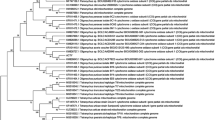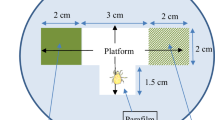Abstract
Conservation and augmentative biological control strategies have been developed to take full advantage of the natural enemies that occur in Spanish citrus orchards. Among them, the predatory mites Euseius stipulatus, Neoseiulus californicus and Phytoseiulus persimilis play an important role in the biological control of tetranychid mites. However, these predatory mites are often affected by pesticides and information about the side-effects of these products against these beneficial arthropods is essential to guarantee their efficacy. The side-effects of some pesticides remain unknown and the primary aim of this study was to fill this gap. We have further used this information and that collected from other sources to compare the response of these three mite species to pesticides. Based on this information, E. stipulatus has the most tolerant species, followed by N. californicus and P. persimilis. Therefore, using E. stipulatus as an indicator species in citrus may have led to the paradox of selecting presumed selective pesticides resulting in excessive impact on N. californicus and, especially on P. persimilis. Because these two latter species are considered key for the biological control of T. urticae in citrus, especially clementines, in Spain, we propose to use P. persimilis as the relevant indicator of such effects on predacious mites occurring in citrus instead of E. stipulatus. This change could have a dramatic impact on the satisfactory control of tetranychid mites in citrus in the near future.

Similar content being viewed by others
References
Abad-Moyano R, Pina T, Dembilio O, Ferragut F, Urbaneja A (2009a) Survey of natural enemies of spider mites (Acari: Tetranychidae) in citrus orchards in eastern Spain. Exp Appl Acarol 47:49–61
Abad-Moyano R, Pina T, Ferragut F, Urbaneja A (2009b) Comparative life-history traits of three phytoseiid mites associated with Tetranychus urticae (Acari: Tetranychidae) colonies in clementine orchards in eastern Spain: implications for biological control. Exp Appl Acarol 47:121–132
Abad-Moyano R, Pina T, Pérez-Panadés J, Carbonell E, Urbaneja A (2010) Efficacy of Neoseiulus californicus, Phytoseiulus persimilis in suppression of Tetranychus urticae in young clementine plants. Exp Appl Acarol 50:317–328
Aguilar-Fenollosa E, Ibanez-Gual MV, Pascual-Ruiz S, Hurtado M, Jacas JA (2011a) Effect of ground-cover management on spider mites and their phytoseiid natural enemies in clementine mandarin orchards (I): bottom-up regulation mechanisms. Biol Control 59:158–170
Aguilar-Fenollosa E, Ibanez-Gual MV, Pascual-Ruiz S, Hurtado M, Jacas JA (2011b) Effect of ground-cover management on spider mites and their phytoseiid natural enemies in clementine mandarin orchards (II): top-down regulation mechanisms. Biol Control 59:171–179
Aguilar-Fenollosa E, Pascual-Ruiz S, Hurtado MA, Jacas JA (2011c) Efficacy and economics of ground cover management as a conservation biological control strategy against Tetranychus urticae in clementine mandarin orchards. Crop Prot 30:1328–1333
Ansaloni T, Pascual-Ruiz S, Hurtado MA, Jacas JA (2008) Can summer and fall vegetative growth regulate the incidence of Tetranychus urticae Koch on clementine fruit? Crop Prot 27:459–464
Argolo PS, Banyuls N, Santiago S, Mollá O, Jacas J, Urbaneja A (2013) Compatibility of Phytoseiulus persimilis and Neoseiulus californicus (Acari: Phytoseiidae) with imidacloprid to manage clementine nursery pests. Crop Prot 43:175–182
Aucejo S, Gimeno E, Gómez-Cadenas A, Monfort R, Obiol F, Prades E, Ramis M, Ripollés JL, Tirado V, Zaragoza L, Jacas JA, Martínez-Ferrer MT (2003) Management of Tetranychus urticae in citrus in Spain: acarofauna associated to weeds. IOBC/WPRS Bull 26:213–220
Aucejo-Romero S, Gómez-Cadenas A, Jacas M (2004) Effects of NaCl-stressed citrus plants on life-history parameters of Tetranychus urticae (Acari: Tetranychidae). Exp Appl Acarol 33:55–67
Bellows JR, Morse JG (1988) Residual toxicity following dilute or low-volume applications of insecticides used for control of California red scale (Homoptera: Diaspididae) to four beneficial species in a citrus agroecosystem. J Econ Entomol 81:892–898
Bellows TS, Morse JG, Gaston LK (1992) Residual toxicity of pesticides used for control of lepidopteran insects in citrus to the predaceous mite Euseius stipulatus Athias-Henriot (Acarina, Phytoseiidae). J Appl Entomol 113:493–501
Biobest (2013) Biobest sustainable crop management. http://www.biobest.be/. Accessed 10 May 2013
Blümel S, Matthews GA, Grinstein A, Elad Y (2002) Pesticides in IPM: selectivity, side-effects, application and resistance problems integrated pest and disease management in greenhouse crops. In: Albajes R, Lodovica Gullino M, Lenteren JC, Elad Y (eds) Developments in plant pathology. Springer, Netherland, pp 150–167
Bouras SL, Papadoulis GT (2005) Influence of selected fruit tree pollen on life history of Euseius stipulatus (Acari: Phytoseiidae). Exp Appl Acarol 36:1–14
Costa-Comelles J, Alonso A, Rodríguez JM, García-Marí F (1994) El pulgón Aphis gossypii Glover: eficacia de algunos plaguicidas en cítricos y su acción sobre el fitoseído Euseius stipulatus. Levante Agrícola 328:201–213
Ferragut F, García-Marí F, Costa-Comelles J, Laborda R (1987) Influence of food and temperature on development and oviposition of Euseius stipulatus and Typhlodromus phialatus (Acari: Phytoseiidae). Exp Appl Acarol 3:317–329
Ferragut F, Costa-Comelles J, García-Marí F, Laborda R, Roca D, Marzal C (1988) Dinámica poblacional del fitoseido Euseius stipulatus (Athis-Henriot) y su presa Panonychus citri (McGregor) (Acari: Phytoseidae, Tetranychidae), en los cítricos españoles. Bol Sanid Veg Plagas 14:45–54
Ferragut F, Laborda R, Costa-Comelles J, García-Marí F (1992) Feeding-behavior of Euseius stipulatus and Typhlodromus phialatus on the citrus red mite Panonychus citri (Acari, Phytoseiidae-Tetranychidae). Entomophaga 37:537–543
García-Marí F, Ferragut F, Costa-Comelles J, Laborda R, Santabala E, Ferragut F, Marzal C, Colomer P, Costa J (1983) El ácaro rojo Panonychus citri (McGregor): incidencia en la problemática fitosanitaria de nuestros agrios. Bol Sanid Veg Plagas 9:191–218
García-Marí F, Rivero JMD, Santaballa E (1984) The citrus red mite, Panonychus citri, a new pest of citrus in Spain. EPPO Bull 14:129–134
García-Marí F, Ferragut F, Marzal C, Costa-Comelles J, Laborda R (1986) Ácaros que viven en las hojas de los cítricos españoles. Inv Agr Prod Prot Veg 1:61–92
Grafton-Cardwell EE, Ouyang YL, Striggow RA (1997) Predaceous mites (Acari: Phytoseiidae) for control of spider mites (Acari: Tetranychidae) in nursery citrus. Environ Entomol 26:121–130
Hassan SA (1977) Standardized techniques for testing side-effects of pesticides on beneficial arthropods in the laboratory. Z Pflanzenkrankh Pflanzensch 84:158–163
Hassan SA (1994) Activities of the IOBC/WPRS working group pesticides and beneficial organisms. IOBC/WPRS Bull 17:1–5
Hassan SA, Oomen PA (1985) Testing the side effects of pesticides on beneficial organisms by OILB working party. In: Hussey NW, Scopes N (eds) Biological pest control: the glasshouse experience. Blandford Press, Poole, pp 145–152
Hassan E, Oomen PA, Overmeer WPJ, Plevoets P, Reboulet JN, Rieckmann W, Samsoe-Petersen L, Shires SW, Stäubli A, Stevenson J, Tuset JJ, Vanwetswinkel G, van Zon AQ (1985) Standard methods to test the side-effects of pesticides on natural enemies of insects and mites developed by the IOBC/WPRS Working Group “Pesticides and Beneficial Organisms”. EPPO Bull 15:214–255
Hassan SA, Bigler F, Bogenschütz H, Boller E, Brun J, Chiverton P, Edwards P, Mansour F, Naton E, Oomen PA, Overmeer WPJ, Polgar L, Rieckmann W, Samsoe-Petersen L, Stäubli AA, Sterk G, Tavares K, Tuset JJ, Viggiani G, Vivas AG (1988) Results of the fourth joint pesticide testing programme carried out by the IOBC/WPRS -Working Group “Pesticides and Beneficial Organisms”. Z Angew Entomol 105:321–329
Jacas JA, Garcia-Marí F (2001) Side-effects of pesticides on selected natural enemies occurring in citrus in Spain. IOBC/WPRS Bull 24:103–112
Jacas JA, Urbaneja A (2010) Biological control in citrus in Spain: from classical to conservation biological control. In: Ciancio A, Mukerji KG (eds) Integrated management of plant pests and diseases. Springer, Dordrecht, pp 61–429
Jacas JA, Karamaouna F, Vercher R, Zappalà L (2010) Citrus pest management in the northern Mediterranean basin (Spain, Italy and Greece) integrated management of arthropod pests and insect borne diseases. In: Ciancio A, Mukerji KG (eds) Integrated management of plant pests and diseases. Springer, Netherland, pp 3–27
Juan-Blasco M, San Andrés V, Martínez-Utrillas MA, Argilés R, Pla I, Urbaneja A, Sabater-Muñoz B (2013) Alternatives to ginger root oil aromatherapy for improved mating performance of sterile Ceratitis capitata (Diptera: Tephritidae) males. J Appl Entomol 137:244–251
Koppert (2013) Koppert biological systems. http://www.koppert.es/. Accessed 10 May 2013
Landis DA, Wratten SD, Gurr GM (2000) Habitat management to conserve natural enemies of arthropod pests in agriculture. Annu Rev Entomol 45:175–201
MAGRAMA (2013) Ministerio de Medio Ambiente y Medio Rural y Marino. http://www.magrama.es/es/agricultura/temas/medios-de-produccion/productos-fitosanitarios/registro/menu.asp. Accessed 16 May 2013
Martínez-Ferrer MT, Jacas-Miret JA, Ripollés-Moles JL, Aucejo-Romero S (2006) Approaches for sampling the twospotted spider mite (Acari: Tetranychidae) on clementines in Spain. J Econ Entomol 99:1490–1499
McMurtry JA (1977) Some predaceous mites (Phytoseidae) on citrus in the Mediterranean region. Entomophaga 22:19–60
McMurtry JA (1982) The use of phytoseiids for biological control: progress and future prospects. In: Hoy MA (ed) Recent advances in knowledge of the Phytoseiidae. Univ Calif Div Agric Sci Publ, Berkeley, pp 23–48
McMurtry JA, Croft BA (1997) Life-styles of phytoseiid mites and their role in biological control. Annu Rev Entomol 42:291–321
Overmeer WPJ (1985) Rearing and handling. In: Helle W, Sabelis MW (eds) World crop pests. Spider mites: their biology, natural enemies and control, vol 1B. Elsevier, Amsterdam, pp 161–169
Pascual-Ruiz S, Urbaneja A (2006) Lista de efectos secundarios de plaguicidas sobre fauna útil en cítricos. Levante Agrícola 380:186–191
Pascual-Ruiz S (2012) Estudio de la diversidad genética y desarrollo de umbrales de Tetranychus urticae en clementinos para la mejora de su gestión integrada. Ph.D. Thesis, Departament de Ciències Agràries i del Medi Natural, Universitat Jaume I de Castelló de la Plana, Spain
Pina T, Argolo PS, Urbaneja A, Jacas JA (2012) Effect of pollen quality on the efficacy of two different life-style predatory mites against Tetranychus urticae in citrus. Biol Control 61:176–183
San-Andrés V, Abad-Moyano R, Ansaloni T, Aucejo S, Belliure B, Dembílio O, Jacas JA, Urbaneja A, Mora J, Ripollés JL (2006) Efectos secundarios sobre Euseius stipulatus de tratamientos cebo dirigidos al control de Ceratitis capitata. Phytoma España 180:38–45
Sterk G, Hassan SA, Baillod M, Bakker F, Bigler F, Blümel S, Bogenschütz H, Boller E, Bromand B, Brun J, Calis JNM, Coremans-Pelseneer J, Duso C, Garrido A, Grove A, Heimbach U, Hokkanen H, Jacas J, Lewis G, Moreth L, Polgar L, Rovesti L, Samsoe-Petersen L, Sauphanor B, Schaub L, Stäubli A, Tuset JJ, Vainio A, Van DeVeire M, Viggiani G, Viñuela E, Vogt H (1999) Results of the seventh joint pesticide testing programme carried out by the IOBC/WPRS-Working Group “Pesticides and Beneficial Organisms”. Biocontrol 44:99–117
Straub CS, Snyder WE (2006) Species identity dominates the relationship between predator biodiversity and herbivore suppression. Ecology 87:277–282
Urbaneja A, Pascual-Ruiz S, Pina T, Abad-Moyano R, Vanaclocha P, Monton H, Dembilio O, Castanera P, Jacas JA (2008) Efficacy of five selected acaricides against Tetranychus urticae (Acari: Tetranychidae) and their side effects on relevant natural enemies occurring in citrus orchards. Pest Manag Sci 64:834–842
Urbaneja A, Catalán J, Tena A, Jacas JA (2013) Gestión Integrada de Plagas de Cítricos. http://gipcitricos.ivia.es/. Accessed 15 May 2013
Vacas S, Vanaclocha P, Alfaro C, Primo J, Verdú MJ, Urbaneja A, Navarro-Llopis V (2012) Mating disruption for the control of Aonidiella aurantii Maskell (Hemiptera: Diaspididae) may contribute to increased effectiveness of natural enemies. Pest Manag Sci 68:142–148
van Lenteren JC (2000) A greenhouse without pesticides: fact or fantasy? Crop Prot 19:375–384
van Lenteren JC, Woets J (1988) Biological and integrated pest control in greenhouses. Annu Rev Entomol 33:239–269
Vanaclocha P, Vidal-Quist C, Oheix S, Montón H, Planes L, Catalán J, Tena A, Verdú MJ, Urbaneja A (2013) Acute toxicity in laboratory tests of fresh and aged residues of pesticides used in citrus on the parasitoid Aphytis melinus. J Pest Sci 86:329–336
Wilson F (1966) The conservation and augmentation of natural enemies. Int J Pest Manag A 12:40–46
Acknowledgments
The authors thank Laura Planes, Helga Montón, and Jose Catalán (IVIA) and Tatiana Pina (UJI) for technical assistance. This work was partially funded by the Conselleria d’Agricultura, Pesca i Alimentació de la Generalitat Valenciana and the Spanish Ministry of Science and Innovation (projects: AGL2008-05287-C04/AGR and AGL2011-30538-C03/AGR). P.S.A. was recipient of a Santiago Grisolía grant from the Generalitat Valenciana.
Author information
Authors and Affiliations
Corresponding author
Rights and permissions
About this article
Cite this article
Argolo, P.S., Jacas, J.A. & Urbaneja, A. Comparative toxicity of pesticides in three phytoseiid mites with different life-style occurring in citrus: Euseius stipulatus, Neoseiulus californicus and Phytoseiulus persimilis . Exp Appl Acarol 62, 33–46 (2014). https://doi.org/10.1007/s10493-013-9726-2
Received:
Accepted:
Published:
Issue Date:
DOI: https://doi.org/10.1007/s10493-013-9726-2




